
The former "New" Gongguo Bridge across the Lancangjiang photographed in January 2008 when it was still in operation.
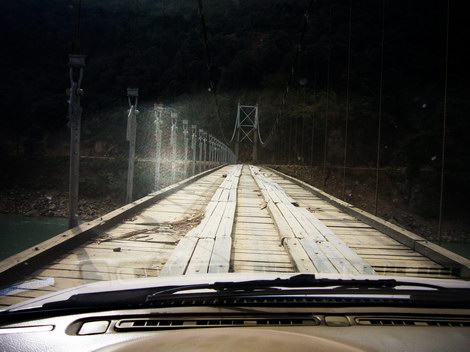
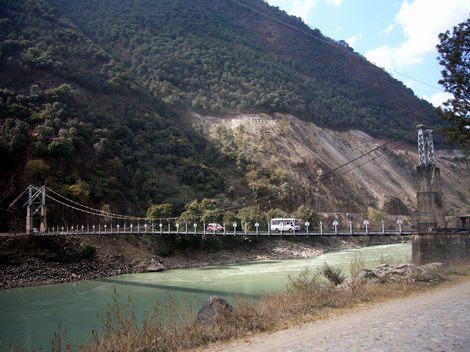
While driving over the "New" Gongguo Bridge one can imagine being a WW-II supply truck driver.
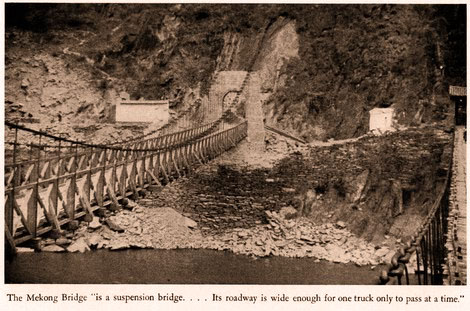
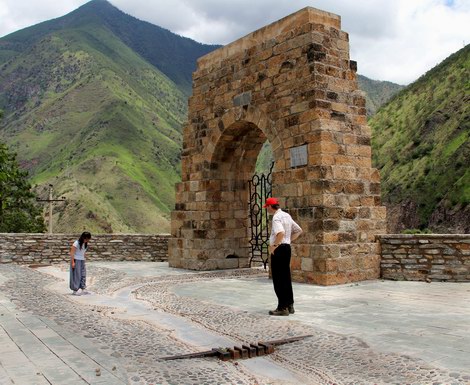
The upgraded "Old" Gongguo Bridge in its 1938 form seen from the west bank (Photo: Carol Smith).The bridgehead of the former "Old" Gongguo Bridge has been rebuilt above the high waterline of the new reservoir as a monument.
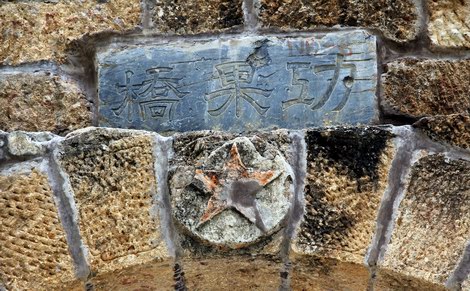
The name Gongguo Bridge in traditional scrip and from right to left combined with the communist star on the bridgehead.
As part of the "Burma road" the Gongguo bridges spanned the Lancangjiang (Mekong).
The "Old" Gongguo Bridge had been upgraded in 1938 in order to handle the supplies that came up the Burma road. This bridge was still too small and goods had to be hand carried across. Small trucks could then take the bridge while empty and big trucks had to take a ferry across the river.
In November 1940 the "New" Gongguo Bridge, with a span of 90 meters, was completed some 800 metres upstream in order to improve the capacity of the Burma Road to 10 tons.
Both bridges were bombed several times from the air because they played a vital role in the supply of the Chinese troops stopping the Japanese invaders at the Nujiang river (Salween).
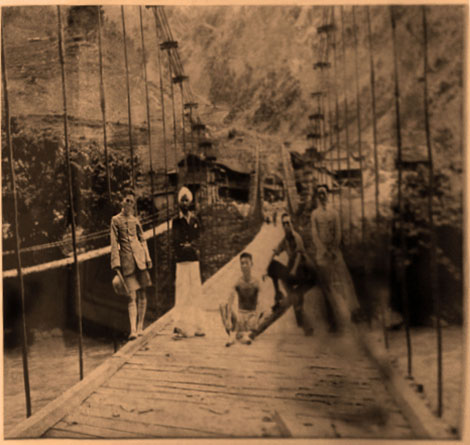
The "Old" Gongguo bridge before the upgrade seen from the east bank. Note the even older footbridge on the left. (©2)![]()
Both bridges have now disappeared in the reservoir that now forms the junction of the Lancangjiang and Pi River.
One bridgehead of the "Old" Gongguo Bridge has been moved uphill and is now part of a monument commemorating the history of these bridges and the vital role they played in the war against Japan and the defence of western Yunnan. Strangely the location of these two bridges is not displayed in the model of the river that forms part of the monument.
Admission Fee:¥0

You will only receive emails that you permitted upon submission and your email address will never be shared with any third parties without your express permission.
